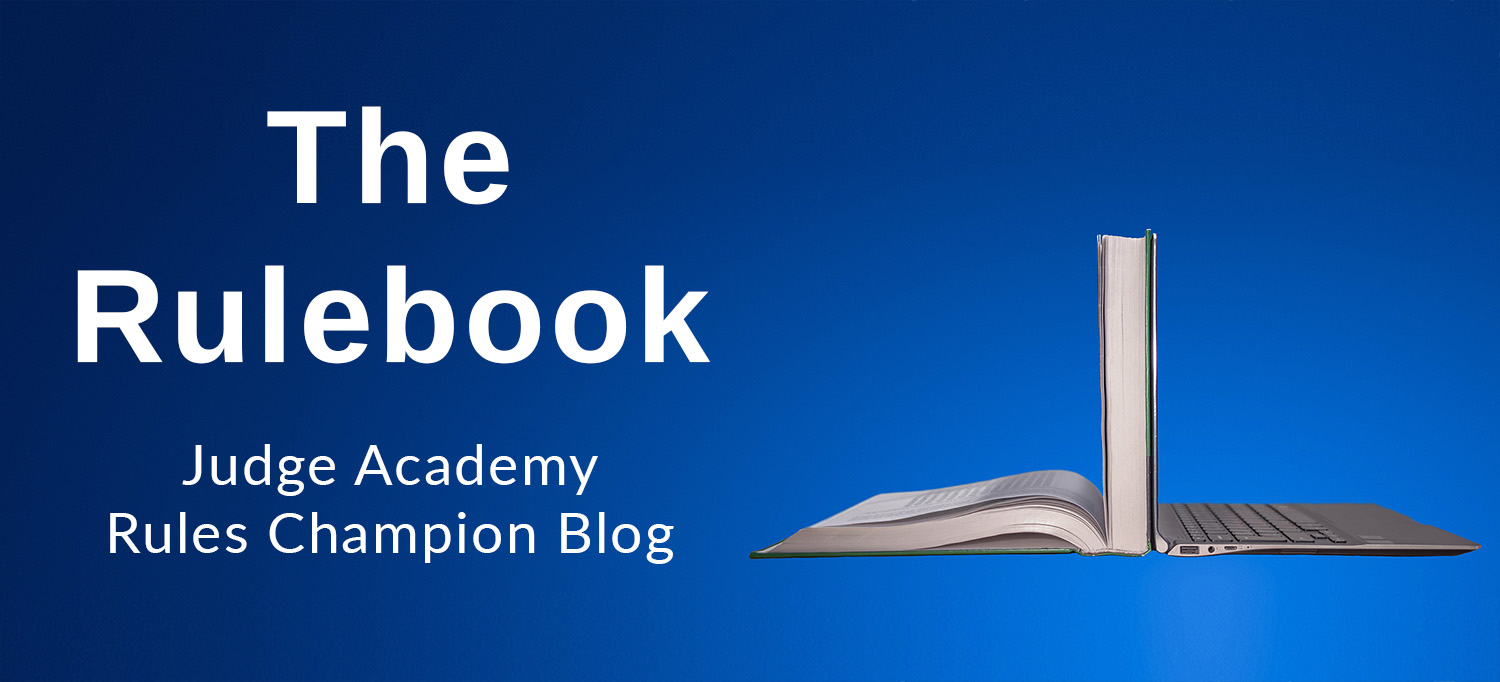
Welcome to today’s edition of The Rulebook! We will be looking at one of the most widely misunderstood concepts that judges must learn on their way to Level 2: Dependencies! This is a pretty meaty topic so let’s just dive right into it.
Continuous Effects
Dependency is a concept that comes up in the interaction of continuous effects, governed by CR 613.8 and its three subrules. A continuous effect, as defined by CR 611.1, “modifies characteristics of objects, modifies control of objects, or affects players or the rules of the game, for a fixed or indefinite period.” There are a lot of things in Magic that fall under continuous effects, from Giant Growth to Clone. Famously, continuous effects are applied to objects in the game through a series of layers, ensuring that certain interactions of cards will work as expected. For example, if a player controls both Darkest Hour and Bad Moon, you would expect all creatures to get the +1/+1 from Bad Moon since they are black due to Darkest Hour. Also, if a player puts a Control Magic on their opponent’s creature, that player would expect their Glorious Anthem to apply to the creature they just stole. The layer system simply ensures that these interactions indeed have the generally expected outcome.
Layers and Timestamps
The layer system handles effects in separate layers quite well (like both of the previous examples). However, some complications can arise when multiple effects apply in the same layer. Normally, we simply go with timestamp order (see CR 613.7 and its subrules for how objects receive timestamps) to determine how the effects apply. This makes some intuitive sense. If I control Darkest Hour and then cast Moonlace on one of my creatures, I would expect that creature to be colorless and not black. Reversing them also makes some sense. If I Moonlace my creature and then cast Darkest Hour, I would expect the Darkest Hour to overwrite the Moonlace and make my creature ultimately black. This is how timestamps determine the order of continuous effects and this also handles many interactions. The problems arise when applying a continuous effect somehow changes another continuous effect that might be applying in the same layer.
Dependencies
Let’s look at one of the most famous dependency-related interactions: Urborg, Tomb of Yawgmoth and Blood Moon. Both of these effects are type-changing effects, so they will apply within the same layer. However, there’s a rather large difference between the two potential outcomes if we simply base the interaction on timestamp order. If we apply Urborg first and then Blood Moon, all nonbasic lands (including Urborg!) will end up being Mountains while basic lands will be Swamps in addition to their normal types. This is an odd outcome for a number of reasons, chief among them the fact that Urborg won’t have its Swamp-making static ability anymore, yet it’s still modifying the basic lands! Also, effects like Blood Moon’s are supposed to stop nonbasic lands from doing whatever it is that made them special, so applying timestamp order means that Blood Moon isn’t really doing what it’s intended to do. CR 613.8 and its subrules govern situations like this, specifically looking for an effect that changes the text or existence of another effect, what it applies to, or what it does to any of the things it applies to. Blood Moon changes the existence of Urborg’s effect, so this interaction qualifies as a dependency. Here, we say that “Urborg depends on Blood Moon.” Whenever we have a dependency, we apply the “independent” effect first. In this case, we apply Blood Moon. Then, Urborg no longer has its ability, so it doesn’t apply at all (see CR 305.7 for details on why Urborg loses its ability). This results in Blood Moon “shutting off” Urborg as intended, regardless of their timestamp order.
Another example that may be a bit more direct is Blood Moon and Conversion. Clearly, applying Conversion first will result in any already-existing Mountains becoming Plains, but all nonbasic lands will simply be Mountains. Here, applying Blood Moon will change what Conversion applies to. Conversion depends on Blood Moon. Thus, we apply Blood Moon first, then Conversion, and all nonbasics will be Plains as you would expect.
The Rabbit Hole
Anyone that has spoken to me at any length at an event has probably heard one of my favorite rules questions. I enjoy it because it quite literally breaks the dependency system. Here’s the scenario:
To begin, I control Taiga which is a Land – Mountain Forest.
I then cast Life and Limb and Taiga becomes a Land Creature – Mountain Forest Saproling.
I next cast Blood Moon and Taiga becomes a Land – Mountain (Why? Think about dependencies!).
The final step comes when I cast Sprout and create a Saproling token. Now, with respect to the Taiga, Life and Limb depends on Blood Moon. With respect to the Saproling token, however, Blood Moon depends on Life and Limb! We have to apply all continuous effects to all objects in the same order, so what do we do here? CR 613.8b to the rescue! “If several dependent effects form a dependency loop, then this rule is ignored and the effects in the dependency loop are applied in timestamp order.” In short, when presented with this problem, we abandon dependencies and revert to timestamps. So our Taiga is now a Land Creature – Mountain Saproling, simply because the Saproling token (which is also a Land Creature – Mountain Saproling) entered the battlefield! This is the kind of rules weirdness that I love.
Thank you for going on this journey through dependencies with me today. Did this help you understand layers a bit better than before? Do you have any interesting dependency situations? Continue the conversation on the Judge Academy Discord server!
If you’d like to contact me, you can find me on the Judge Academy Discord server or by email to daniel@judgeacademy.com



